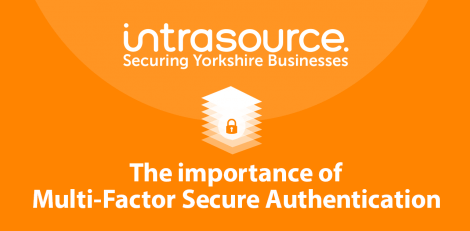Data breaches, hackers, phishing, online fraud – in 2018, cybercrime is big business, and cyber attacks are becoming more and more sophisticated.
With GDPR now in force (check out this post for additional information) businesses have no option but to take cybersecurity seriously. Suffer a breach, and the fines and reputational damage could be catastrophic.
In this post, we explore multi-factor secure authentication, also known as two-factor authentication or 2FA for short – looking at what it is, and why it’s so important to utilise it as part of your wider cyber security strategy.
2FA – what it is and how it works
Two-factor authentication systems place an extra step in the verification process when logging in to systems and accounts. Instead of just logging in with a username and password/pin number, users also require an additional piece of information – if they don’t have it, they can’t log in!
2FA systems come in many forms. They can require:
- Something only the users know – like an additional password, secret question answer or pin
- SMS codes – sent by text to the user’s number
- Something the user has – such as a key fob, credit card, hardware token or smartphone
- Software codes – generated by a dedicated smartphone/computer application
- A biometric identifier – like a fingerprint, iris scan or voice recognition system
Multi-factor authentication – the benefits
2FA acts as an extra layer of security. It means that even if criminals get hold of both usernames and passwords, they still won’t be able to access accounts.
For businesses, implementing software code systems can make systems significantly harder to infiltrate, by shutting off one of the most common weak points – poor password security.
In 2018, usernames and passwords are inherently vulnerable – non-tech-savvy employees will often use the same passwords and pins across multiple accounts, and as soon as one is breached, hacked or stolen, it could open up a real vulnerability across your organisation.
2FA prevents that and cuts risk significantly.
Challenges – Understanding and Implementation
2FA isn’t a particularly new concept, and today, the majority of systems and software packages offer some kind of built-in 2FA system.
The challenge for business owners is in the implementation. It comes down to changing the security culture of their organisations, encouraging employees to enable 2FA and making sure it’s used across all business accounts and systems. This starts with education about common cyber security risks, and the impact this could have on the organisation – before looking at the benefits 2FA can deliver.
One barrier is the perception that it takes a lot of time, and for employees that don’t understand or value security, it can seem like a faff. However, whilst it is true that 2FA adds an extra stage into the security process – the reality is that 2FA systems take seconds to use.
It’s a small effort from everyone, for a big boost in security for the whole organisation.
2FA for businesses from Intrasource
Whilst many software packages and accounts now have multi-factor secure authentication built in as an option, many in-house systems do not.
At Intrasource, we can help your business to protect personal data and mission-critical systems from external threats and minimise the risk of data breaches caused by compromised passwords – with advanced, secure two-factor authentication systems.
Our flexible solution is suitable for a wide range of applications, fitting seamlessly into your existing systems. As part of the service, our expert teams can deploy and manage the process on your behalf.
Additional information about multi-factor authentication can be found here or read our blog on how to avoid fraudulent emails. Alternatively, to discuss your requirements, or for advice on any aspect of cyber security, please get in touch with our team today on 01482 628800, or by email on [email protected].
Find more information and IT security news here and get involved in Safer Internet Day.



